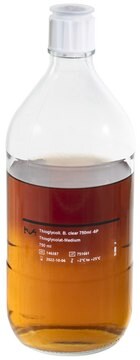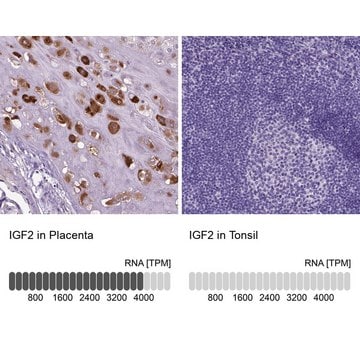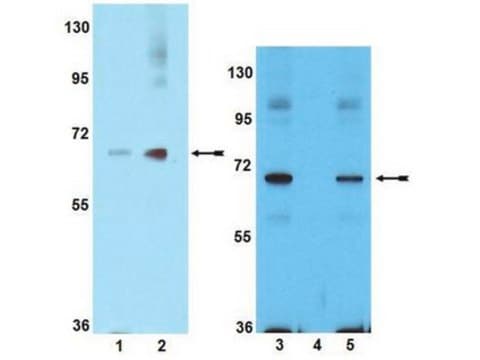05-172
Anti-IGF-I Antibody, clone Sm1.2
clone Sm1.2, Upstate®, from mouse
Synonym(s):
Mechano growth factor, insulin-like growth factor 1, insulin-like growth factor 1 (somatomedin C), somatomedin C
About This Item
Recommended Products
biological source
mouse
Quality Level
antibody form
purified immunoglobulin
clone
Sm1.2, monoclonal
species reactivity
avian, chicken, mouse, rat, human
manufacturer/tradename
Upstate®
technique(s)
immunohistochemistry: suitable
immunoprecipitation (IP): suitable
neutralization: suitable
western blot: suitable
isotype
IgG1κ
NCBI accession no.
UniProt accession no.
shipped in
dry ice
target post-translational modification
unmodified
Gene Information
human ... IGF1(3479)
General description
IGF-1 is produced primarily by the liver as an endocrine hormone and targets tissues in a paracrine/autocrine fashion. Production is stimulated by growth hormone and can be retarded by undernutrition, growth hormone insensitivity, lack of growth hormone receptors, or failures of the downstream signaling pathway post GH receptor including SHP2 and STAT5b. Approximately 98% of IGF-1 is always bound to one of 6 binding proteins (IGF-BP). IGFBP-3, the most abundant protein, accounts for 80% of all IGF binding. IGF-1 binds to IGFBP-3 in a 1:1 molar ratio. Its primary action is mediated by binding to specific IGF receptors present on many cell types in many tissues. The signal is transduced by intracellular events. IGF-1 is one of the most potent natural activators of the AKT signaling pathway, a stimulator of cell growth and multiplication and a potent inhibitor of programmed cell death.
Specificity
Immunogen
Application
5 μg of a previous lot immunoprecipitated 100 ng of IGF-I.
Immunohistochemistry:
10 μg/mL of a previous lot was reported by an independent laboratory to detect IFG-I in formalin-fixed, paraffin-embedded skin sections.
(Lui, 1994).
Neutralization:
10-20 μg/mL of a previous lot inhibited the activity of 10 ng/mL of IGF-I as determined by testing with chicken embryo fibroblasts (CEF) using an ATP endpoint assay (ATPLiteTM-M, Packard Instruments).
Signaling
Insulin/Energy Signaling
Quality
Western Blot Analysis:
0.5-2 μg/mL of this antibody detected 100 ng of IGF-I (Catalog # 01-208) under non-reducing conditions.
Target description
Physical form
Storage and Stability
Analysis Note
MCF-7 cell extracts
Other Notes
Legal Information
Disclaimer
Storage Class Code
11 - Combustible Solids
WGK
WGK 1
Certificates of Analysis (COA)
Search for Certificates of Analysis (COA) by entering the products Lot/Batch Number. Lot and Batch Numbers can be found on a product’s label following the words ‘Lot’ or ‘Batch’.
Already Own This Product?
Find documentation for the products that you have recently purchased in the Document Library.
Our team of scientists has experience in all areas of research including Life Science, Material Science, Chemical Synthesis, Chromatography, Analytical and many others.
Contact Technical Service








